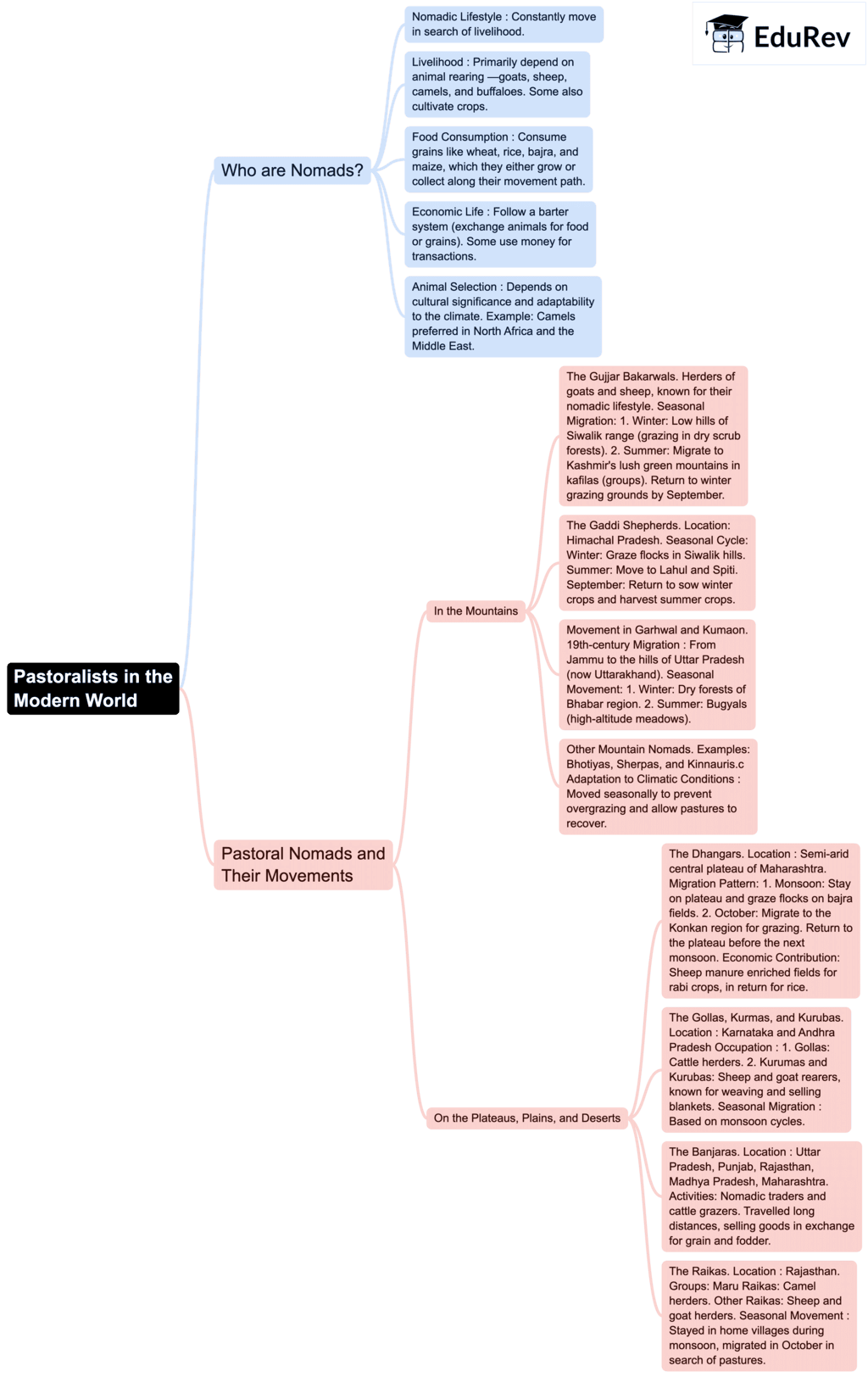Class 9 Exam > Class 9 Notes > Social Studies (SST) Class 9 > Mind Map: Pastoralists in the Modern World
Mind Map: Pastoralists in the Modern World | Social Studies (SST) Class 9 PDF Download

The document Mind Map: Pastoralists in the Modern World | Social Studies (SST) Class 9 is a part of the Class 9 Course Social Studies (SST) Class 9.
All you need of Class 9 at this link: Class 9
|
55 videos|635 docs|79 tests
|
FAQs on Mind Map: Pastoralists in the Modern World - Social Studies (SST) Class 9
| 1. What are the main challenges faced by pastoralists in the modern world? |  |
Ans. Pastoralists today face several challenges, including climate change, land degradation, and competition for resources. Additionally, modernization and urbanization often lead to restricted access to traditional grazing lands, while policies and regulations can marginalize their livelihoods. The impact of globalization also affects market access and prices for pastoral products.
| 2. How do pastoralists adapt to changing environmental conditions? |  |
Ans. Pastoralists adapt to changing environmental conditions through various strategies, such as shifting grazing patterns, diversifying livestock species, and utilizing seasonal migration. They may also engage in community-based resource management and employ traditional ecological knowledge to sustain their herds and maintain ecological balance.
| 3. What role do pastoralists play in biodiversity conservation? |  |
Ans. Pastoralists play a crucial role in biodiversity conservation by maintaining diverse livestock breeds and managing extensive grazing lands that support various plant and animal species. Their traditional practices contribute to the resilience of ecosystems and help preserve genetic diversity, which is vital for food security and ecological health.
| 4. How has technology impacted pastoralist communities? |  |
Ans. Technology has both positive and negative impacts on pastoralist communities. On the positive side, advancements in communication and information technology enable better access to markets, weather forecasts, and veterinary services. However, the introduction of industrial agriculture and land-use changes can threaten traditional pastoral practices and lead to resource conflicts.
| 5. What are the socio-economic benefits of pastoralism? |  |
Ans. Pastoralism provides significant socio-economic benefits, including livelihood security for millions of people, cultural identity, and contributions to local and national economies. Pastoralists produce essential goods such as meat, milk, and wool, and their movements can promote trade and cultural exchange in rural areas, enhancing community resilience and cohesion.
Related Searches
















